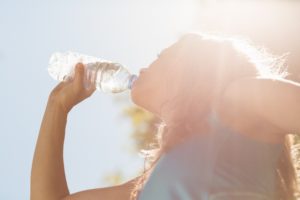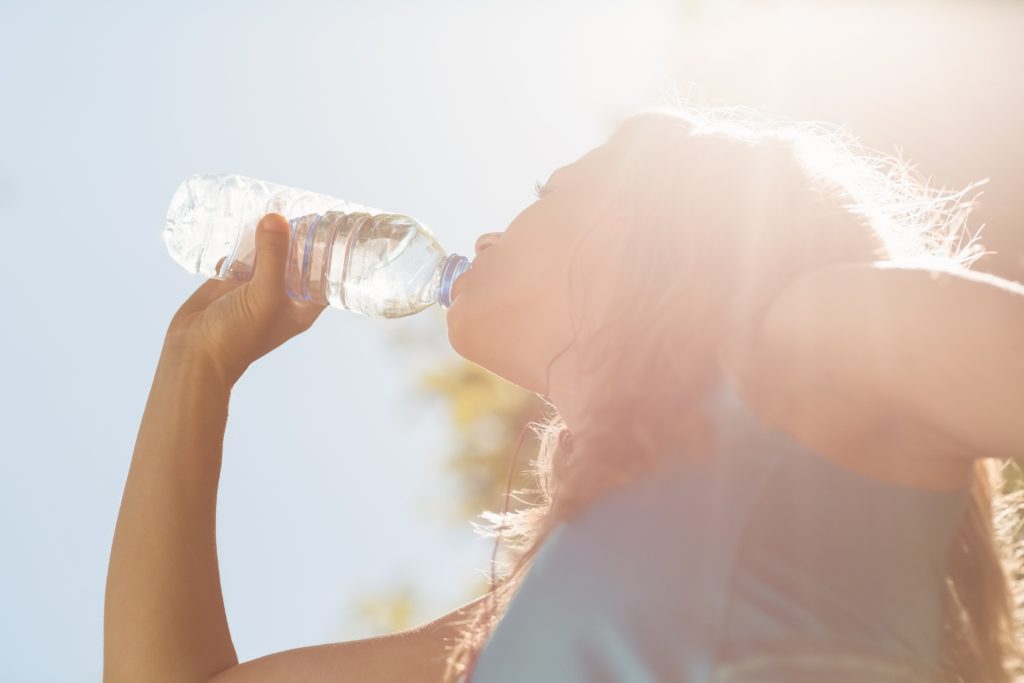 FEELING TIRED OR hungry? You might simply be thirsty.
FEELING TIRED OR hungry? You might simply be thirsty.
Our bodies need water to maintain the right temperature, circulate blood, remove waste, and lubricate our joints. We need a lot of water each day because we’re constantly losing precious body moisture—through breathing, urination, and sweating.
HYDRATION INDICATORS
Staying hydrated is always important, but during hot summer months it requires more attention. Thirst is the most obvious sign that you need water—and have for quite some time. Other signs your body needs water include a faint sense of hunger, fatigue, or slightly stiff joints.
The color of your urine is also an indicator of your hydration levels. Clear or pale yellow urine means all is well in the body tissues. A darker color means you need more water.
If you sweat heavily, you will need more fluids. Weigh yourself before and after your workout to see how much weight you lose from sweating. According to the American Heart Association, you need to replenish your body with a pint of water for every pound of sweat you lose.
What about lighter sweating? Don’t congratulate yourself yet—not sweating much may indicate dehydration that could lead to heat exhaustion. And traveling in different climates may cause you to sweat differently.
HYDRATION RECOMMENDATIONS
A good rule of thumb is to aim for six to eight 8-ounce glasses of water a day. That doesn’t quite measure up to the 91 ounces for women and 125 ounces for men recommended by the Food and Nutrition Board, but that’s OK because we get about 22 percent of our water from food. Certain fruits and vegetables are especially rich in electrolytes, essential fatty acids, and minerals important to keeping you hydrated.
EATING FOR HYDRATION
How much water is in your food? Consider the water content of these popular foods:
90–99 percent water—cantaloupe, strawberries, watermelon, lettuce, cabbage, celery, and spinach.
80–89 percent water—yogurt, apples, grapes, oranges, carrots, steamed broccoli, pears, and pineapple
70–79 percent water—bananas, avocados, cottage cheese, ricotta cheese, baked potatoes, cooked corn, and shrimp
60–69 percent water—pasta, legumes, salmon, ice cream, and chicken breast
5 HYDRATION TIPS
- Always keep water at hand in a cup or a reusable water bottle.
- Remind yourself to drink water throughout your day—set a couple of alarms in your phone or sports watch.
- Jazz up your water by adding a little lemon, lime, berries, or mint.
- Remember that other liquids, like milk and coconut water, count, too.
- Eat lots fruit and vegetables—they have a high water content.
Need a doctor close to home? Visit summithealthcare.net/find-a-doctor.

